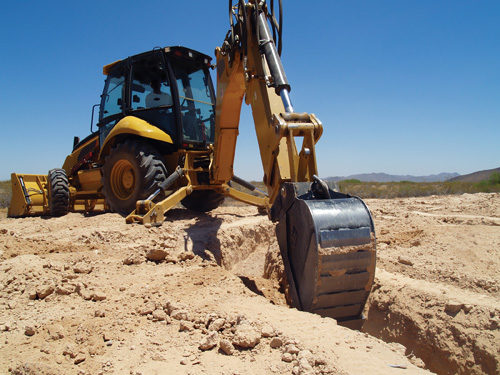Trenching and excavation safety

In an instant and without notice, an unsupported trench can give way and a worker can be buried alive. “Even though small amounts of dirt may not seem treacherous, a single cubic yard of dirt can weigh more than 3,000 pounds, which can fatally crush or suffocate workers,” NIOSH states.
OSHA notes that excavation and trenching are among the most hazardous construction operations, with cave-ins being “perhaps the most feared trenching hazard.” Other hazards in this line of work include falls, hazardous atmospheres and falling loads. From 2000 to 2009, 350 workers died in trenching or excavation cave-ins. How can employers help keep workers safe?
Planning is paramount
NIOSH recommends that employers do the following before beginning a trenching or excavation project:
- Designate a trained competent person to check that all safety precautions are in place. In relation to trenching, OSHA defines a competent person as “an individual who is capable of identifying existing and predictable hazards or working conditions that are hazardous, unsanitary, or dangerous to workers, soil types and protective systems required, and who is authorized to take prompt corrective measures to eliminate these hazards and conditions.”
- Call 811 to ensure no utility lines are in the job area and to mark any existing lines.
- Locate safe places away from the trench to place spoil piles and heavy equipment paths.
- Ask the competent person to determine what kinds of protective systems will be needed for the job, and have the systems in place before workers are allowed on-site.
- Enforce the rule that workers who are younger than 18 are not allowed in the trench.
- Assign workers to the job only if they have been trained about hazards and work practices in a language – and at a literacy level – they understand.
- Have an emergency action plan in place that details steps to take in the event of a trench incident.
- Make sure workers know never to enter an unprotected trench.
- Teach workers to immediately exit a trench and call for the competent person if they find any evidence of problems with the protective trenching system.
Post a comment to this article
Safety+Health welcomes comments that promote respectful dialogue. Please stay on topic. Comments that contain personal attacks, profanity or abusive language – or those aggressively promoting products or services – will be removed. We reserve the right to determine which comments violate our comment policy. (Anonymous comments are welcome; merely skip the “name” field in the comment box. An email address is required but will not be included with your comment.)

